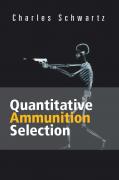
Originally Posted by
the Schwartz

What is the point of any of this?
...

Originally Posted by
0ddl0t

My point is that the existing tests of 10% gel & 10% gel behind 4 layers of denim are imperfect for many of the popular concealed carry guns on the market. Repeatable tests in other media or with alternate intermediate barriers can illustrate real deficiencies left uncovered by these traditional tests.
As an example, I give the gold dot 147 from a 3" barrel which is on Doc's list of recommended ammo and which reliably expands in traditional testing with 10% ordnance gel. But if you lower ρ (using lower density media) or V (by adding distance, barriers, etc) even slightly it begins to fail to expand.
That gold dot 147s are at the lower bounds of their performance window from a 3" barrel is useful information to know & that information can be reliably and repeatedly discerned from non traditional (but scientifically valid) tests.

Originally Posted by
the Schwartz

Once again, mass-density is just one part of the the Newton-LaPlace formula: c = √(K/ρ) . You'll need to provide all of the requisite physical properties of these "alternative mediums" to prove that they possess the dynamic equivalent qualities specified by the Newton-LaPlace formula so that they yield data comparable to other mediums.
No. I don't. I am not attempting to compare expansion size or penetration depth between dissimilar media. I am doing a Y/N expansion check to help ensure my 147gr jhp doesn't fail to expand if shot from a 3" barrel into a 350 lb man.
Again:
Penetration of a 9mm bullet at 1000 ft/sec is resisted by an inertial force of about 800 pounds; it is obvious that the presence or absence of a 3 to 5 pound shear force makes no practical difference in the penetration at this velocity. This also explains why the fact that gelatin fractures more easily than tissue does is not important.
The extension of these dynamics to soft tissue variation is obvious. Different types of tissue present different resistance to finger probing by a surgeon, but the surgeon is not probing at 1000 ft/sec. Different tissue types do have differences in the amount of shear force they will support, but all of these forces are so small relative to inertial forces that there is no practical difference. The tissue types are closer to one another than they are to water, and bullet expansion in water and tissue are nearly identical at velocities over 600 ft/sec where all bullet expansion takes place (See Bullet Penetration for a detailed explanation of bullet expansion dynamics).
Since inertial forces depend on accelerating mass, it makes sense that these forces should be lower at lower velocities (because the penetrated material cannot be accelerated to a velocity higher than the bullet). Shear forces have little velocity dependence, and as a result, shear forces are a much larger fraction of the total when bullet velocity is below the cavitation threshold. This low velocity effect is the reason that total bullet penetration depth is much different in water and in tissue or a valid tissue simulant.
As a result of the penetration dynamics, most soft solids with a density very near soft tissues (i.e., near the density of water) are satisfactory tissue simulants when shear forces are not important. However, total penetration depth depends significantly on dynamics at velocities below 400 ft/sec, so most materials do not properly simulate penetration depth. The total bullet penetration depth in tissue and a valid tissue simulant should be the same; standard practice is to use calibrated gelatin to insure this. In effect, gelatin calibration is done to ensure that the shear forces in the gelatin are the same as in typical soft tissue (as described in Bullet Penetration, the technical parameter used in the dynamic is viscosity).
-- “Wound Ballistics Misconceptions.” (Duncan MacPherson, Wound Ballistics Review, 2(3): 1996; 42-43)
Distilled:
When a bullet is expanding, the inertial forces (velocity + density) are so very much larger than the shear forces that the shear forces can be ignored.





 Reply With Quote
Reply With Quote

